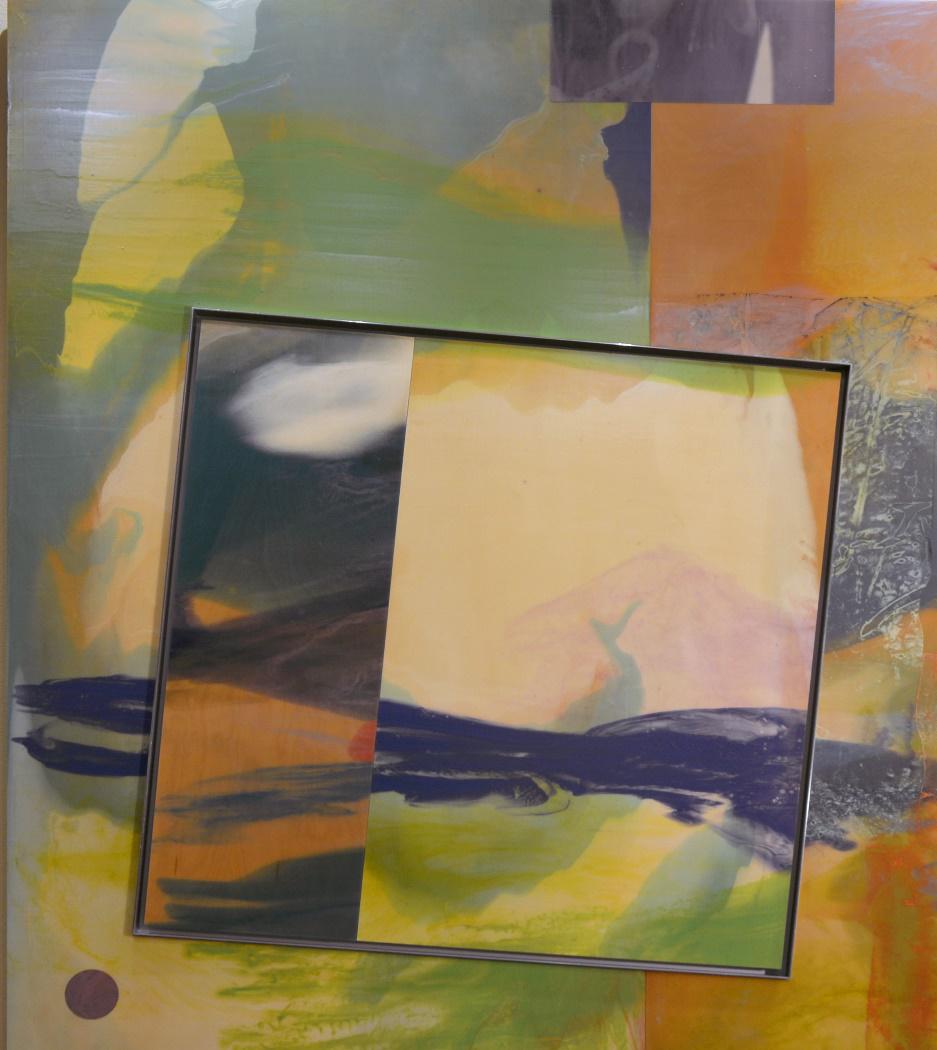
2 minute read
SAM GILLIAM: SELECTIONS
ON VIEW FEB 21 – AUG 15, 2021
by Steven High, Executive Director and Marian Carpenter, Associate Director for Collections, Chief Registrar
Sam Gilliam is one of the most important abstract artists working today. He will have a career retrospective, at the age of 87, in 2022 at the Smithsonian Institution Hirshhorn Museum and Sculpture Garden in Washington, DC. Known for his experimental exploration of materials and constant invention, Gilliam first came to critical attention in the 1960s as a later member of the Washington Color School. To emancipate his art from constraints, Gilliam infused his appreciation of blues and jazz improvisation to be conceptualized in abstraction. His radical freedom to express spontaneity when working with materials created the first of his important “drape” paintings in the late 1960s that he would continue to explore throughout his career. By removing the canvas from the traditional stretcher, Gilliam created innovative work that was both painting and sculpture. His installation of the “drape” works filled galleries with painted canvases suspended off the walls or from the ceilings and often draped over objects such as sawhorses or ladders. These pieces encouraged improvisation because they could not be hung in the same manner twice.
He quickly expanded beyond the Color School tradition with his fierce experimentation in the use of color and materials. As an African American artist working during the height of the Civil Rights Movement, Gilliam was influenced by the social and political activism of the period. His piece Red April documents, with bold colors, the country’s shocked reaction and mourning following the assassination of Dr. Martin Luther King, Jr. on April 4, 1968.

Sam Gilliam, Green Wave (detail), 1999. Acrylic on birch plywood with metal frame and piano hinges, 86 1/2 x 83 x 2 in. Private Collection, Sarasota
Following his invention of the “drape” works, Gilliam continued his experimentation with materials and fabrication with paintings on birch, collages composed of cut-up painted canvas, and polypropylene works adhered to birch panels. In the 1970s, he was influenced by the jazz artistry of John Coltrane and Miles Davis and again used improvisation in the formation of his geometric collages. Although he did not align neatly with the ideology of the Black Arts Movement to produce art that represented black social issues, Gilliam used his abstraction as an activist tool to educate museums in diversity.
Intertwined with his phenomenal object making, Gilliam experimented throughout his career with the process of making prints. Collaborating with renowned printmakers like Lou Stovall in D.C. or art presses such as Tandem Press in Madison, Wisconsin, Gilliam’s prints were integral and influential to his entire creative process. He continues to inspire contemporary artists with his techniques and values teaching and mentoring. This exhibition brings together nearly 20 unique works and limited edition prints by Gilliam from the early 1970s to 2010.
The exhibition demonstrates the technical and visual experimentation of the artist and shows how he often circles back to incorporate earlier styles. We extend our thanks to the nine generous collectors who have graciously agreed to lend their works for the exhibition. This exhibition is the first in a series of small focus collections highlighting the collectors in our region. We could not think of a better way to launch this intermittent series than with the work of Sam Gilliam.




